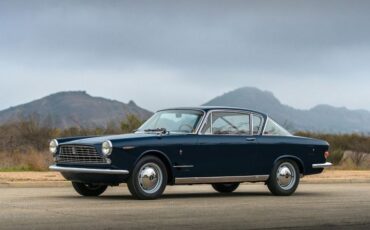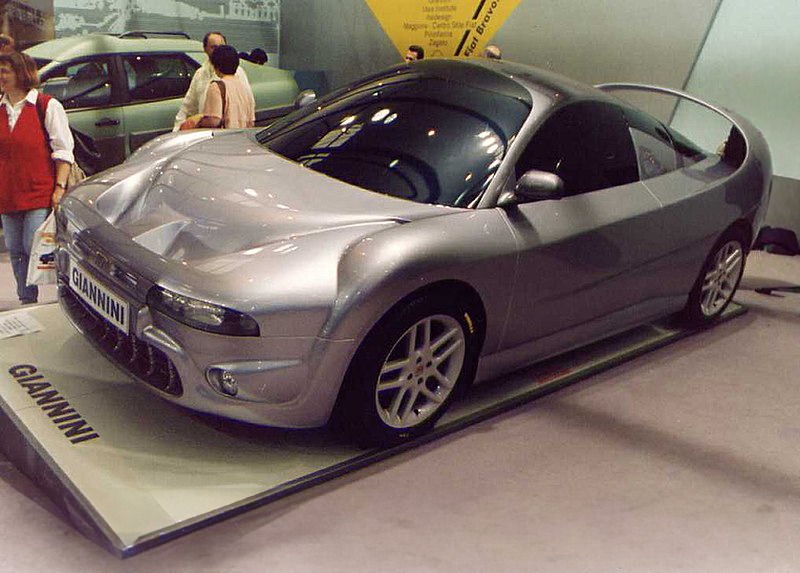
When Fiat launched the Bravo in 1996, the Turin-based automaker invited Italian coachbuilders to showcase their own coupe interpretations of the vehicle at the Turin Motor Show. This followed the tradition set by the Cinquecento and the Punto. The show became the perfect stage to witness the ingenuity and creativity of Italian designers, with 25 concept cars making their debut, 17 of which were based on the new Fiat models. Among these, ten were ‘official’ sponsored by Fiat and displayed as a group—while seven were ‘unofficial,’ the result of independent interpretations by various coachbuilders. The ‘official’ section featured five coupes, two compact minivans, a four-door pickup, a recreational vehicle, and a special taxi. In this article, we will explore the most fascinating concepts based on the Fiat Bravo, revealing how each coachbuilder infused their unique style to transform a production car into a work of art on wheels. These were the Fiat Bravo Concept Cars:
Bertone Enduro
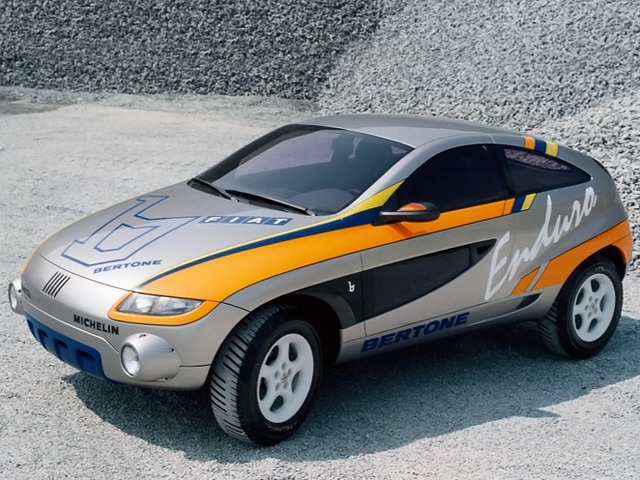
The Fiat Enduro by Bertone redefined the SUV concept by adapting the Bravo chassis for off-road use. With its four-wheel drive, elevated ground clearance, and rugged design, the Enduro was built to tackle tough terrain while maintaining a sporty, compact appearance. The 2000 cc engine delivered 147 horsepower, ensuring strong performance. Bertone’s focus on off-road capability also led to the creation of the Enduro-Raid variant for rally racing, showcasing its versatility.
Boneschi Taxi-Help

Following the Baby-Taxi based on the Fiat Cinquecento presented in 1992, Boneschi’s Taxi-Help built on the Fiat Bravo chassis to create a spacious and accessible taxi designed specifically for disabled passengers. This large cabin concept featured extensive glass surfaces and windows, ensuring a bright and airy interior. The design emphasized ease of access and comfort, making it an innovative solution for improving mobility and inclusivity in urban transportation.
Coggiola Sentiero
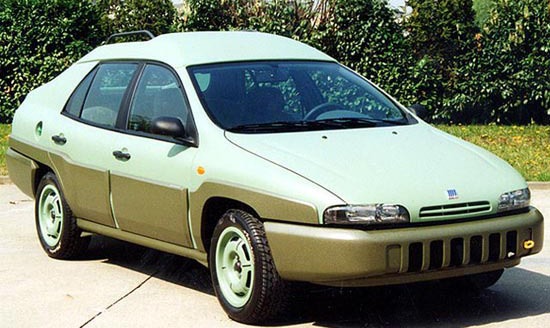
Carrozzeria Coggiola’s Fiat Brava Sentiero presented a fresh take on vehicle design by blending practicality with style. This concept was designed to offer a versatile alternative to traditional pickups, featuring seating for five and a spacious cargo area. The Sentiero stood out with its off-road bumpers, which added a rugged edge while maintaining its passenger-friendly design. Coggiola’s proposal highlighted the potential of adapting the Brava platform to create a vehicle that combined traditional comfort with enhanced functionality, showcasing their innovative approach to automotive design.
Fioravanti Flair
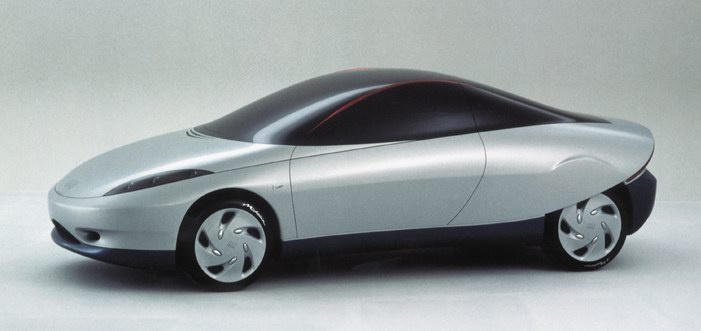
The Fiat Bravo Flair by Fioravanti was a bold exploration in aerodynamic design. Named “Flair” for “fluid air,” it focused on optimizing aerodynamics to improve driving dynamics and efficiency. Building on previous studies, the Flair featured advanced aerodynamic brakes that deploy automatically at high speeds to enhance braking performance. Its sleek 2+2 coupe design included transparent engine hood surfaces, a retractable wiper system, and a deployable front spoiler. The Flair also used a high-intensity LED rear strip and replaced side mirrors with rear-facing cameras, showcasing Fioravanti’s innovative approach to blending aerodynamics with style.
Giannini Windsurf

When Fiat launched the Bravo in 1996, the Turin-based automaker invited Italian coachbuilders to showcase their own coupe interpretations of the vehicle at the Turin Motor Show. This followed the tradition set by the Cinquecento and the Punto. The show became the perfect stage to witness the ingenuity and creativity of Italian designers, with 25 concept cars making their debut, 17 of which were based on the new Fiat models. Among these, ten were ‘official’ sponsored by Fiat and displayed as a group—while seven were ‘unofficial,’ the result of independent interpretations by various coachbuilders. The ‘official’ section featured five coupes, two compact minivans, a four-door pickup, a recreational vehicle, and a special taxi. In this article, we will explore the most fascinating concepts based on the Fiat Bravo, revealing how each coachbuilder infused their unique style to transform a production car into a work of art on wheels.
I.DE.A Vuscia
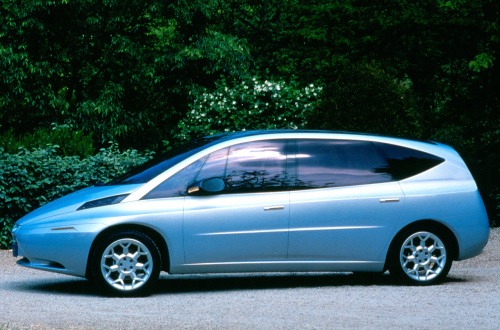
The Fiat Bravo Vuscià by I.DE.A Institute, designed by Justyn Norek, featured a lengthened wheelbase and an overall length of 4.45 meters. This versatile concept could seat up to six passengers or provide a generous cargo area for two. Its design emphasized spaciousness and adaptability, making it ideal for modern leisure use. Despite its practical features, the Vuscià’s slim snout and overall appearance were not universally praised for their beauty. Reintroduced in 2003 under the Chinese brand Changan as the Jiexun, the Vuscià’s innovative design demonstrated its lasting appeal and practicality.
Italdesign Formula Legram

The Fiat Bravo Formula Legram by Italdesign was an elegant 4-seater coupé designed to complement the Formula 4 and Formula Hammer. Italdesign’s proposal featured smooth, 1960s-inspired lines and achieved a drag coefficient (Cd) of 0.255. The design paid homage to the Fiat Bravo and Brava, with a distinctive grille and integrated light clusters combining indicators, high beams, low beams, and fog lights into a single element.
Maggiora Armadillo
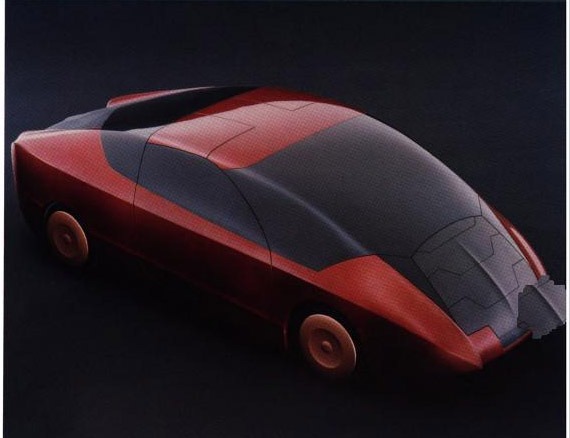
The Fiat Bravo Armadillo, designed by Centro Stile Fiat and Maggiora, featured a unique 3+2 seating configuration, a flat interior floor, and a low drag coefficient of 0.17. This mini-MPV aimed at urban mobility combined a friendly aesthetic with practical design. The spacious interior and versatile layout catered to city dwellers, making it suitable for daily commutes and small family outings. The aerodynamic efficiency of the Armadillo improved fuel economy and reduced emissions, showcasing how thoughtful design and engineering can create a practical and environmentally friendly city car.
Pininfarina Sing / Song
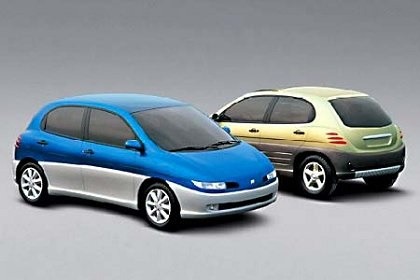
The Fiat Sing and Fiat Song, both designed by Pininfarina on the Fiat Bravo chassis, highlighted distinct styles. The Sing offered a sporty look with aerodynamic lines, a bold front, and performance enhancements like a tuned suspension. Its interior combined advanced technology with a driver-focused design.
Zagato Bravo Bis
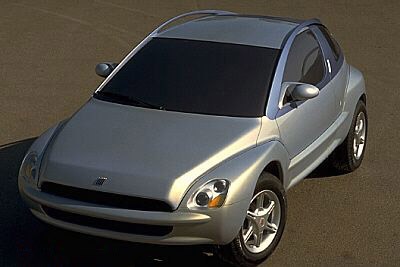
The Fiat Bravo Bis, designed by Zagato, reimagined the SUV Coupe genre with a stylish blend of retro and modern design. Drawing inspiration from the classic Fiat 8V rather than the Tipo-based coupe or earlier Fiat models, the Bravo Bis featured sleek, aerodynamic lines highlighted by a sophisticated silver paint job. A distinctive off-road touch came from the covered spare tire mounted on the back, enhancing its rugged appeal. Additionally, the tail lights were sourced from the original Fiat Bravo, linking the concept to its heritage while emphasizing its retro theme.


